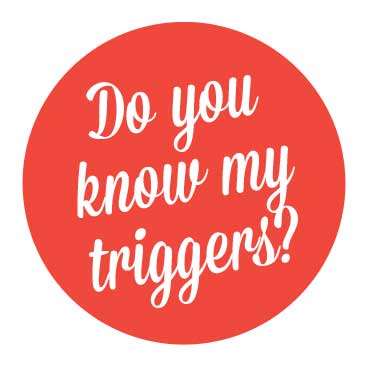

All the Reasons Your Dog Barks
and What to Do About Problem Barking
I recently saw two German Shepherds at a dog park who were running the fence with two little terriers who were on the other side. Then I noticed that the Shepherds were both wearing shock collars. When I politely asked their owner why, she replied, “Because they bark when they run, and it bothers people.” Talk about shock—I was flabbergasted. Dogs bark; that’s what they do. Expecting a dog not to bark while he’s playing is tantamount to expecting young children to keep quiet while they’re racing around with their friends: it just ain’t gonna happen! That said, there are times when barking can be problematic.
Most dogs will bark when someone is at the front door. This is called alert barking and is a normal behaviour. Most of us want our dogs to let us know when someone is outside anyways; however, we would also like them to stop barking when asked! This is where the problem often arises.

Visitors are a different story, as their entering the home can cause even more arousal. Teach your dogs to go to their beds, lay down, and stay when the doorbell rings or someone knocks. In a nutshell, teaching this “go to bed” behaviour involves repeatedly getting your dog to go to his bed by tossing a treat. Once you can predict that he will go to the bed, add the verbal cue right before tossing the treat. When he’s mastered that, add lying down and staying. Praise and reward. Once your dog gets it, the trick is to add the doorbell as an environmental cue. That means ringing the doorbell and then telling your dogs to go to bed. Repeat, repeat, repeat! Your dogs will soon come to anticipate that when the doorbell rings, the next thing that happens is that they’re asked to go to bed, and they will actually go to bed upon hearing the doorbell, in anticipation of a treat. Since they’ll be lying down, chances are they will not be barking. Either way, once they’ve been lying quietly for a few minutes, either allow the guest to approach them or release them to go greet the guest. Have a friend or family member play the part of the guest during the training period, and don’t forget to reward your dog for staying in place!
Sometimes dogs bark simply because they want something. Some dogs bark for attention; others, because they want to be fed, or to be taken for a walk. And it works! How do I know this with such certainty? Because dogs do what works. If something stops working, they stop doing it. What would be the point of barking and barking to be fed if nothing ever happened. The answer to this one is easy; stop giving in. Even if it’s feeding time, if your dog is barking, wait until he’s been quiet for a period of time and then feed him.
Another common complaint has to do with backyard barking. If your dog barks at squirrels, birds, passersby, and pretty much anything, the answer is to call your dog inside. Again, alert barking is fine, but going on and on is not. What’s that you say? He won’t come when you call? Then it’s time to brush up on the recall, gradually practicing around more challenging distractions. And don’t forget to reward your dog when he does come. If your dog is barking when left alone, the solution is different. If you’re only gone for a few hours at a time, consider allowing your dog to be indoors instead, either crated, gated, or at liberty if he’s non-destructive and fully potty trained. If he must stay outdoors, figure out what he’s barking at. If it’s a dog on the other side of the fence, consider privacy fencing, which will block your dog’s view. If he’s barking at absolutely everything and you are in danger of losing your dog because he has been declared a nuisance, consider a kennel silencer. This is a sound-sensitive, electronic box that hangs on your fence. When your dog barks, it emits a very high-pitched sound that will startle your dog into silence. On most units, you can set the sound to be audible by human ears or you can choose ultrasonic mode, which only dogs can hear. This should not be confused with a bark collar that goes around a dog’s neck, and which I do not recommend.
The bottom line is, dogs bark. It’s the way they communicate, and a “barking problem” is really not a problem at all for dogs, but rather just for us. If your dog’s barking has become problematic for you, figure out exactly why your dog is barking and under what circumstances, and then approach the problem positively and humanely. Find out the tops 5 dog behavior problems and how to address them!
Join the newsletter and never miss out on dog content again!
"*" indicates required fields
By clicking the arrow, you agree to our web Terms of Use and Privacy & Cookie Policy. Easy unsubscribe links are provided in every email.





